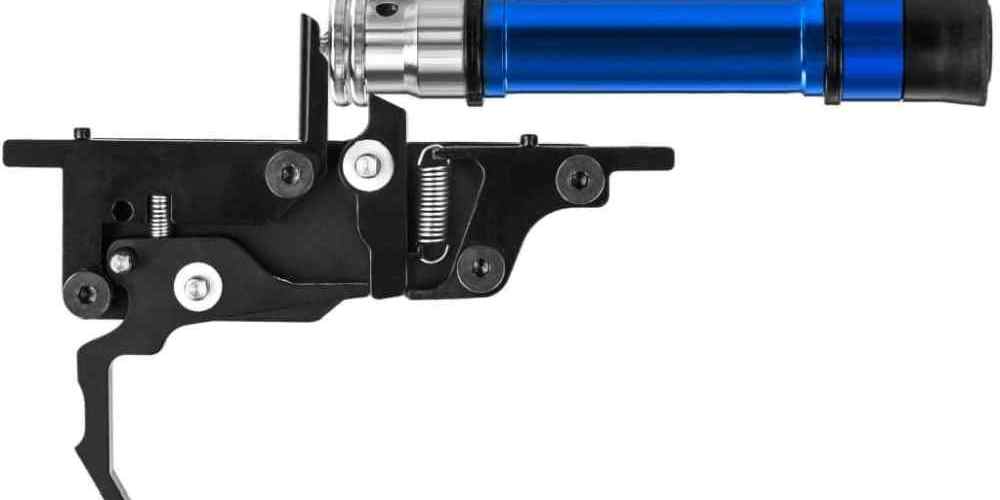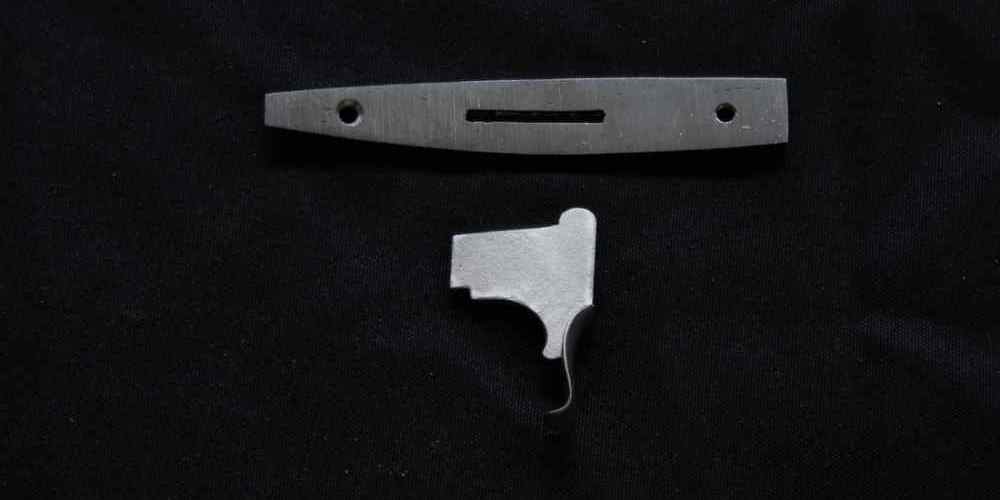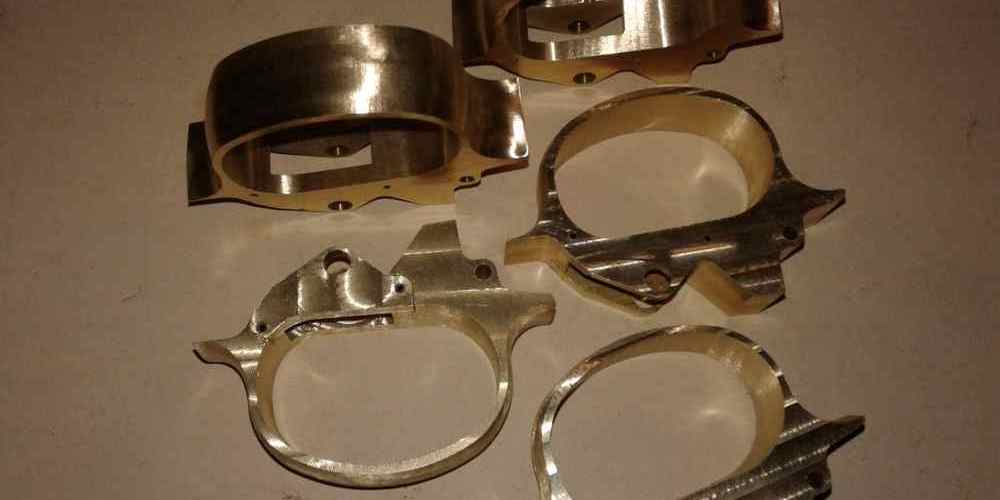“Enhancing precision and control with every shot.”
Impact of Different Trigger Springs on Accuracy
When it comes to shooting dynamics, one of the most crucial components of a rifle is the trigger. The trigger is what initiates the firing sequence, and its performance can greatly impact the accuracy and consistency of your shots. One key element of the trigger mechanism is the trigger spring, which plays a significant role in determining the weight and feel of the trigger pull.
Trigger springs come in various weights and designs, each affecting the trigger pull in different ways. A lighter trigger spring will result in a lighter trigger pull, making it easier to break the shot without disturbing your aim. On the other hand, a heavier trigger spring will require more force to pull the trigger, which can affect your accuracy if not properly managed.
The impact of trigger springs on shooting dynamics is particularly evident in precision shooting, where consistency and control are paramount. A lighter trigger pull can help reduce the chances of jerking or flinching, resulting in more accurate and precise shots. However, a trigger that is too light can also lead to unintentional discharges, especially in high-stress situations.
Conversely, a heavier trigger pull can provide more resistance, which can help prevent accidental discharges. However, it can also make it more difficult to maintain a steady aim, especially for shooters with weaker hands or fingers. Finding the right balance between a light and heavy trigger pull is essential for achieving optimal shooting performance.
In addition to weight, the design of the trigger spring can also impact shooting dynamics. Some trigger springs are designed to provide a smooth and consistent pull, while others may have a more abrupt or gritty feel. The design of the trigger spring can affect the overall feel of the trigger, which can in turn impact your shooting technique and accuracy.
Experimenting with different trigger springs can help you find the right balance between weight and feel for your specific shooting needs. Some shooters may prefer a lighter trigger pull for faster shooting, while others may prefer a heavier trigger pull for more control. Ultimately, the best trigger spring for you will depend on your shooting style, preferences, and the type of shooting you do.
It’s important to note that changing the trigger spring on your rifle should be done carefully and with caution. Improper installation or adjustment of the trigger spring can lead to malfunctions or safety hazards. If you are unsure about how to change the trigger spring on your rifle, it’s best to seek the help of a qualified gunsmith or firearms expert.
In conclusion, the effects of rifle trigger springs on shooting dynamics are significant and can greatly impact your accuracy and performance. Finding the right balance between weight and feel is essential for achieving optimal shooting results. Experimenting with different trigger springs can help you fine-tune your trigger pull to suit your shooting style and preferences. Remember to always handle firearms with care and follow proper safety protocols when making any modifications to your rifle’s trigger mechanism.

How Trigger Springs Affect Trigger Pull Weight
When it comes to shooting dynamics, one of the most important factors to consider is the trigger pull weight. The trigger pull weight refers to the amount of force required to pull the trigger and fire the rifle. This weight can have a significant impact on the accuracy and precision of your shots. One way to adjust the trigger pull weight is by changing the rifle trigger spring.
Rifle trigger springs come in a variety of weights and designs, each affecting the trigger pull weight in different ways. A lighter trigger spring will reduce the amount of force needed to pull the trigger, making it easier to shoot accurately. On the other hand, a heavier trigger spring will increase the trigger pull weight, requiring more force to fire the rifle.
The type of shooting you do will determine the ideal trigger pull weight for your rifle. For precision shooting, a lighter trigger pull weight is often preferred as it allows for more control and accuracy. On the other hand, for hunting or tactical shooting where quick and decisive shots are necessary, a heavier trigger pull weight may be more suitable to prevent accidental discharges.
Changing the trigger spring on your rifle is a relatively simple process that can be done at home with the right tools. However, it is important to follow the manufacturer’s guidelines and recommendations when selecting a new trigger spring. Using the wrong trigger spring can affect the performance and safety of your rifle.
Before making any changes to your rifle trigger spring, it is important to understand how it will affect the overall shooting dynamics. A lighter trigger spring will result in a smoother and more consistent trigger pull, which can improve accuracy and precision. However, it may also increase the risk of accidental discharges if not handled properly.
On the other hand, a heavier trigger spring will require more force to pull the trigger, which can make it more difficult to shoot accurately. However, it can also provide a greater sense of control and prevent accidental discharges in high-stress situations.
Ultimately, the best trigger spring for your rifle will depend on your personal preferences and shooting style. It is important to experiment with different trigger springs to find the one that works best for you. Additionally, it is recommended to seek the advice of a professional gunsmith or firearms expert before making any changes to your rifle trigger spring.
In conclusion, rifle trigger springs play a crucial role in determining the trigger pull weight and overall shooting dynamics of your rifle. By understanding how different trigger springs affect the trigger pull weight, you can make informed decisions about which spring is best suited for your shooting needs. Experimenting with different trigger springs and seeking professional advice can help you optimize the performance and safety of your rifle.
The Role of Trigger Springs in Trigger Reset
When it comes to shooting dynamics, one of the most crucial components to consider is the trigger spring. The trigger spring plays a significant role in trigger reset, which is essential for accuracy and consistency in shooting. In this article, we will explore the effects of rifle trigger springs on shooting dynamics and how they can impact your overall shooting performance.
Trigger reset is the process of the trigger returning to its original position after a shot has been fired. This is a critical aspect of shooting dynamics because it directly affects the speed at which you can fire subsequent shots. A well-tuned trigger spring can help facilitate a quick and smooth trigger reset, allowing for faster follow-up shots and improved accuracy.
The tension of the trigger spring plays a key role in trigger reset. A lighter trigger spring will result in a lighter trigger pull, making it easier to fire the weapon quickly. However, a lighter trigger spring may also increase the risk of accidental discharges if not properly controlled. On the other hand, a heavier trigger spring will require more force to pull the trigger, which can slow down the firing process but may also provide more control and stability.
It is important to find the right balance when choosing a trigger spring for your rifle. The ideal trigger spring tension will depend on your shooting style, preferences, and the type of shooting you will be doing. Some shooters may prefer a lighter trigger pull for faster shooting, while others may prioritize control and stability over speed.
In addition to trigger reset, the trigger spring can also affect the overall feel and performance of the trigger. A high-quality trigger spring can help reduce trigger creep, which is the movement of the trigger before it breaks and fires the weapon. A smooth and consistent trigger pull is essential for accuracy and precision in shooting, and a well-tuned trigger spring can help achieve this.
When selecting a trigger spring for your rifle, it is important to consider the material and quality of the spring. High-quality trigger springs made from durable materials will provide consistent performance and reliability over time. Cheaper, lower-quality springs may wear out quickly and lead to inconsistent trigger pull and reset.
Regular maintenance and proper care of your trigger spring are also essential for optimal shooting performance. Cleaning and lubricating the trigger spring regularly will help prevent dirt and debris from affecting its performance. It is also important to inspect the trigger spring for any signs of wear or damage and replace it if necessary.
In conclusion, the trigger spring plays a crucial role in shooting dynamics and can have a significant impact on your overall shooting performance. Finding the right balance of tension and quality in your trigger spring is essential for achieving accuracy, speed, and control in shooting. By understanding the effects of rifle trigger springs on shooting dynamics and taking proper care of your trigger spring, you can optimize your shooting experience and improve your skills on the range.
Comparing Performance of Stock vs Aftermarket Trigger Springs
When it comes to shooting dynamics, every little detail can make a big difference in performance. One often-overlooked component that can have a significant impact on how a rifle handles is the trigger spring. The trigger spring is responsible for controlling the tension and feel of the trigger pull, which directly affects accuracy and overall shooting experience.
Stock trigger springs that come with rifles are typically designed to meet a certain standard of performance. However, many shooters find that aftermarket trigger springs offer a more customizable and improved shooting experience. Aftermarket trigger springs are often made from higher quality materials and are designed to provide a smoother, lighter trigger pull.
One of the main benefits of aftermarket trigger springs is the ability to adjust the tension to suit individual preferences. Some shooters prefer a lighter trigger pull for faster shooting, while others may prefer a heavier pull for more control. Aftermarket trigger springs allow shooters to fine-tune their trigger to their liking, resulting in improved accuracy and consistency.
In addition to adjustability, aftermarket trigger springs can also improve the overall feel of the trigger pull. Stock trigger springs can sometimes feel gritty or rough, which can affect the shooter’s ability to maintain a steady aim. Aftermarket trigger springs are often designed to provide a smoother, more consistent pull, resulting in a more enjoyable shooting experience.
Another advantage of aftermarket trigger springs is their durability. Stock trigger springs can wear out over time, leading to inconsistent performance and potential malfunctions. Aftermarket trigger springs are typically made from higher quality materials that are more resistant to wear and tear, ensuring long-lasting performance.
When comparing the performance of stock trigger springs to aftermarket trigger springs, shooters often notice a significant difference in shooting dynamics. Aftermarket trigger springs can provide a more consistent and predictable trigger pull, resulting in improved accuracy and overall performance. Shooters who make the switch to aftermarket trigger springs often find that their shooting experience is greatly enhanced.
In conclusion, the effects of rifle trigger springs on shooting dynamics should not be underestimated. Stock trigger springs may meet basic performance standards, but aftermarket trigger springs offer a more customizable and improved shooting experience. With the ability to adjust tension, improve feel, and increase durability, aftermarket trigger springs can make a significant difference in accuracy and overall shooting performance. Whether you are a competitive shooter or a recreational enthusiast, upgrading to aftermarket trigger springs is a worthwhile investment that can take your shooting to the next level.
Adjusting Trigger Springs for Personalized Shooting Experience
When it comes to shooting dynamics, one of the most important factors to consider is the trigger pull weight of your rifle. The trigger spring plays a crucial role in determining the amount of force required to pull the trigger and fire a shot. By adjusting the trigger spring, you can customize your shooting experience to suit your preferences and improve your accuracy on the range or in the field.
The trigger spring is a small but powerful component of your rifle that can have a significant impact on your shooting performance. A lighter trigger pull weight can make it easier to shoot accurately and quickly, while a heavier trigger pull weight can provide more stability and control. By adjusting the trigger spring, you can find the perfect balance between speed and precision to enhance your shooting experience.
One of the main effects of adjusting the trigger spring is the reduction of trigger pull weight. A lighter trigger pull weight can make it easier to shoot accurately and quickly, especially for shooters with smaller hands or weaker grip strength. By reducing the amount of force required to pull the trigger, you can improve your shooting speed and accuracy, leading to better overall performance on the range or in the field.
On the other hand, increasing the trigger pull weight can provide more stability and control when shooting. A heavier trigger pull weight can help prevent accidental discharges and improve your ability to hold the rifle steady while aiming. By adjusting the trigger spring to increase the pull weight, you can enhance your shooting dynamics and achieve greater precision in your shots.
Another effect of adjusting the trigger spring is the improvement of trigger reset. The trigger reset is the distance the trigger must travel forward after firing a shot before it can be pulled again. By adjusting the trigger spring, you can shorten the reset distance and reduce the time it takes to fire consecutive shots. This can help you shoot faster and more accurately, especially in rapid-fire situations where timing is crucial.
In addition to improving shooting dynamics, adjusting the trigger spring can also enhance your overall shooting experience. By customizing the trigger pull weight to suit your preferences, you can create a personalized shooting setup that feels comfortable and natural to you. This can boost your confidence and make shooting more enjoyable, leading to better performance and results on the range or in the field.
In conclusion, the trigger spring is a critical component of your rifle that can have a significant impact on your shooting dynamics. By adjusting the trigger spring, you can customize your shooting experience to suit your preferences and improve your accuracy on the range or in the field. Whether you prefer a lighter trigger pull weight for faster shooting or a heavier trigger pull weight for more stability, adjusting the trigger spring can help you achieve the perfect balance between speed and precision. So take the time to experiment with different trigger spring settings and find the one that works best for you. Your shooting performance will thank you for it.




